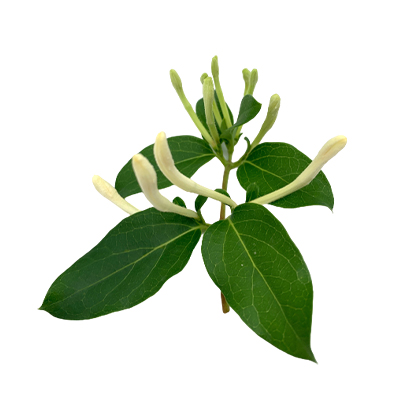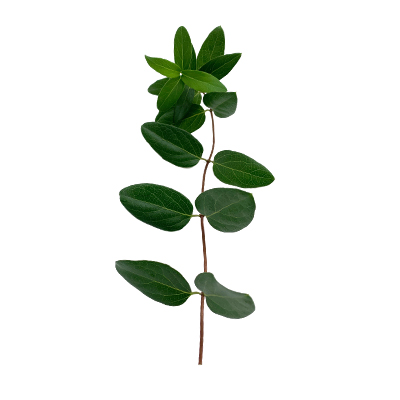Japanese Honeysuckle
Lonicera japonica Thunb.
Caprifoliaceae
Location in our garden
Principal
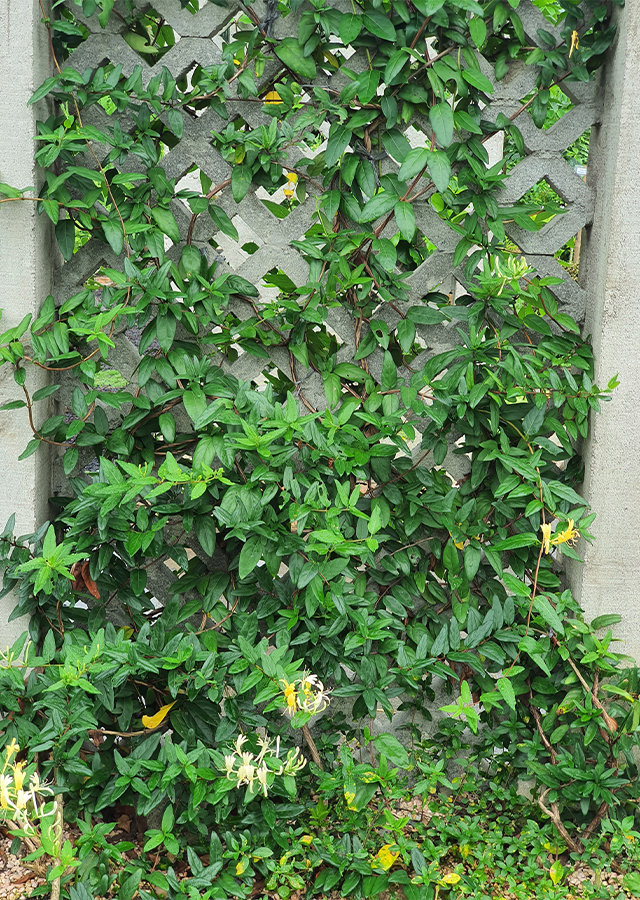
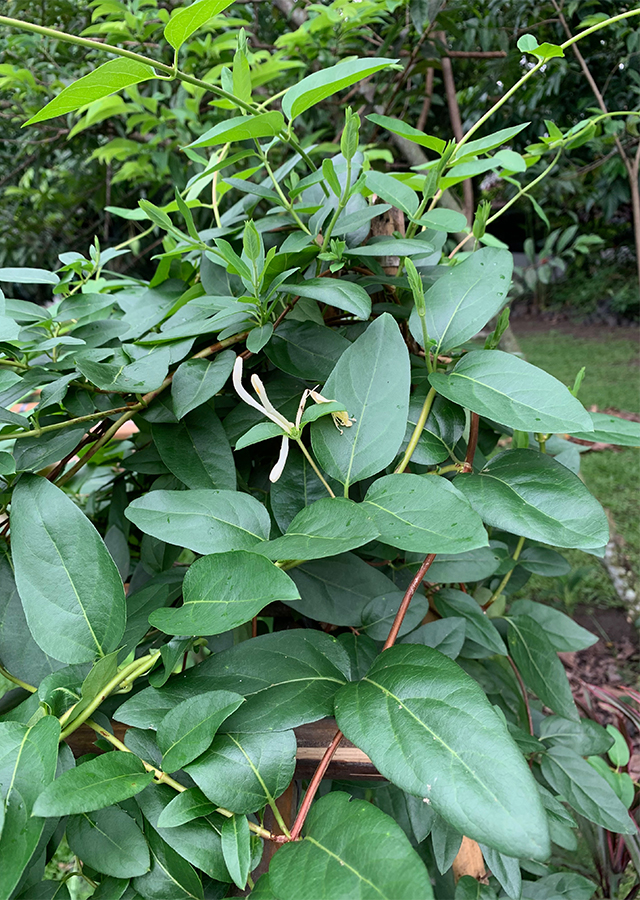
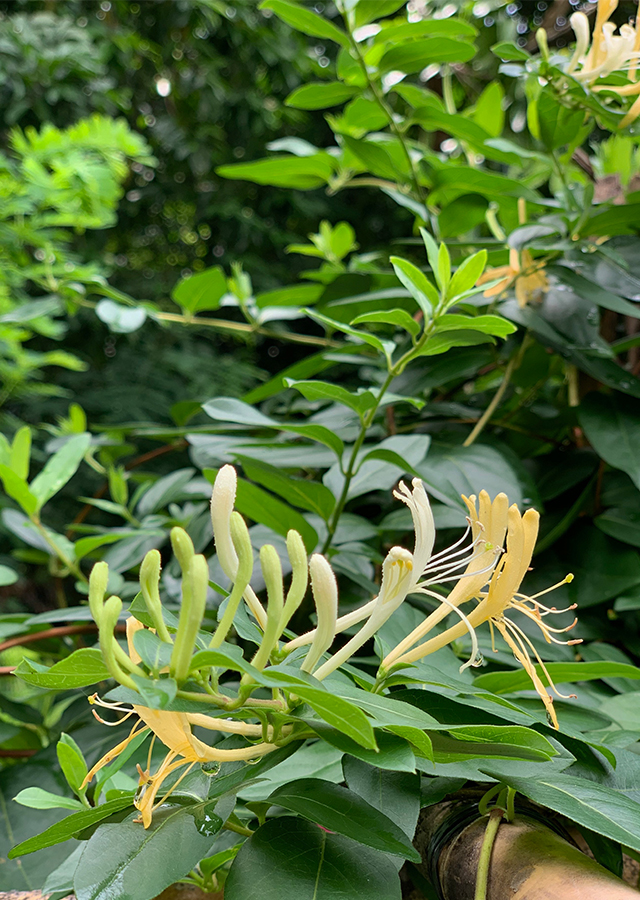
Synonym
Caprifolium brachypodum G.Gordon.
Caprifolium japonicum (Thunb.) Dum.Cours.
Caprifolium roseum Lam.
Habitus
Climbers. Perennial woody climber vine, grows up to 10 m tall.
Part Used
Leaves
Flowers
Twigs
Growing Requirements
Full Sunshine
Need Shade
Drought Resistant
Habitat
Wetland
Riverbanks
Forest
Coastal
Overview
Lonicera japonica is native to China, Japan, and Korea. It is currently common in North America, Canada, Central America, some parts of South America, Europe, and Australia. This plant has risk as an invasive species, and indicate that it likely will continue to spread and become a serious pest where minimal conditions for growth are present. It has become naturalized in many temperate, subtropical, and tropical zones throughout the world. The temperate zone to the tropics is commonly grown as an ornamental and is often used as a ground cover.
Vernacular Names
Ren dong (Chinese), Madreselva (Spanish), Caprifoglio del giappone (Italian), Madressilva (Portugalese), Geissblatt (German), Chèvrefeuille du japon (French). Madre-selva (Argentina), Woodbine (Australia), Madressilva (Brazil), Suikazura (Japanese), Geumeunhwa (Korean), Kamperfuli (Indonesia).
Agroecology
Lonicera japonica is found in a variety of habitats, ranging from old fields, thickets, roadsides, fencerows, and open woodlands, to mature woodlands, where it is especially prominent in canopy gaps, bottomlands and edge habitats. It primarily grows from the temperate climate, although it has been grown in the tropics. It will grow in full sun and full shade but also prefers light gaps, forest margins, old fields, and disturbed areas with light and moisture. This plant prefers healthy moist soil of pH 6.1 to 7.9. L. japonica can withstand an extensive period of frost, with a moist, warm temperate climate, it reaches maximum abundance in areas below 500 m.
Morphology
- Stems - strong, flexible, cylindrical, pilose, brown, smooth.
- Leaves - opposite, lanceolate, oblong-lanceolate, chartaceous, glabrous except for some hairs on the midvein.
- Flowers - fragrant, sessile, in pairs at the end of short axillary branches, calyx green, tubular, the sepals 5, subulate, corolla white, turning yellowish when mature, 2.2-2.5 cm long, infundibuliform.
- Fruits - sessile berries, hard and green when immature, and black and soft when ripe.
- Seeds - brown, 0.2 cm in diameter, ovate to oblong, with a flat to concave inner surface and three ridges on the dorsal surface.
Cultivation
- By seeds - best seeded in a cold frame as soon as it is ripe. The stored seed needs cold stratification for 2 months.
- Stem cuttings - Mature wood cuttings 15-20 cm with or without a heel.
Chemical Constituents
Fenolik, flavonoid, antosianin, sitosterol, α-amyrin, β-amyrin, campesterol, stigmasterol, oleanolic acid, ursolic acid, stigmasta-3,5-dien-7-one, 24-methylenecycloartanol, luteolin, luteoloside, quercetin, rutin, chlorogenic acid.
Traditional Medicinal Uses
- The stems and flower buds are alterative, antibacterial, anti-inflammatory, antispasmodic, depurative, diuretic, and febrifuge.
- Studies have demonstrated antipyretic, analgesic, anti-angiogenic, wound healing, antidiabetic properties, headache relief, digestive system relief, flu relief, and common cold symptoms, nausea relief, brain swelling reduction, skin care benefits, anti-aging, respiratory, anticancer, mouth regeneration, viral infection relief, small intestine pain relief, insomnia prevention.
- For the prevention of acute rheumatoid arthritis, mumps, and hepatitis, the stems are used internally. Often, the plant is used to relieve blood pressure.
- In treating upper respiratory tract infections (including pneumonia) and dysentery, the stems and flowers are used together as an infusion.
- A flower bud infusion is used to treat various disorders, including syphilitic skin diseases and tumors, bacterial dysentery, colds, enteritis, discomfort, swelling, etc.
- The flowers are externally applied as a wash for irritation of the skin, bacterial rashes, and sores.
Part Used
Reference Sources
- CABI. (2014). Invasive Species Compendium-Lonicera japonica. https://www.cabi.org/isc/datasheet/31191. (Accessed 14-12-2020).
- Fern, K. (2019). Useful Tropical Plants. Lonicera japonica. http://tropical.theferns.info/viewtropical.php?id=Lonicera+japonica. (Accessed 14-12-2020).
- Health Benefit Times. (No date). Lonicera japonica. https://www.healthbenefitstimes.com/honeysuckle/. (Accessed 14-12-2020).
- Larson, B.M.H., Catling, P.M., and Waldron, G.E. (2007). The biology of Canadian weeds. 135. Lonicera japonica Thunb. Can. J. Plant Sci. 87: 423–438.
- Schierenbeck, K.A. (2004). Japanese Honeysuckle (Lonicera japonica) as an Invasive Species; History, Ecology, and Context. Critical Reviews in Plant Sciences, 23(5): 391–400.
- StuartXchange. (2020) Philippine Medicinal Plants. Honeysuckle. http://www.stuartxchange.com/Honeysuckle.html. (Accessed 14-12-2020).

